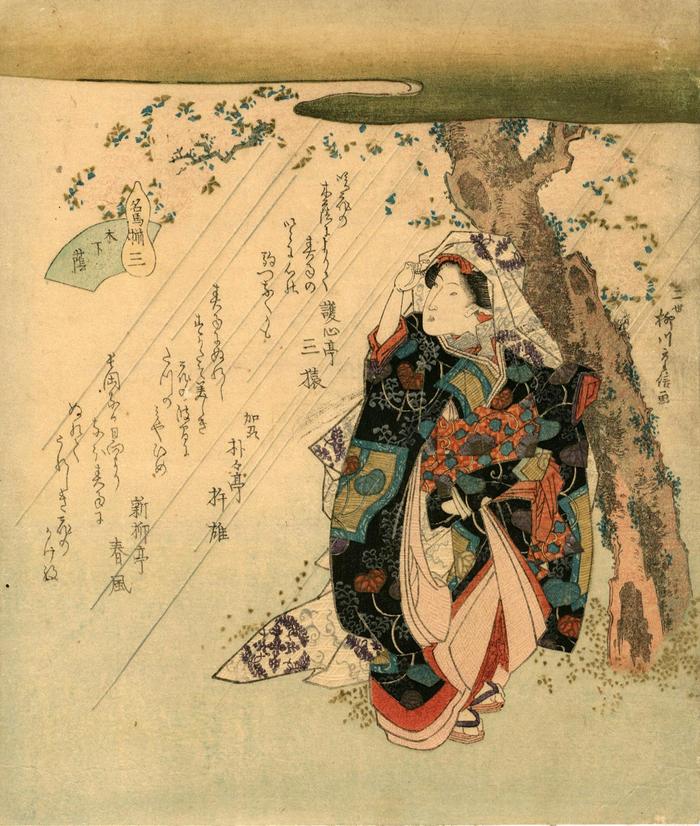Yanagawa Shigenobu II (二代目柳川重信) (artist )
Kisanta (nickname - 季三太)Sesshōsai (go - 雪焦斎)
Shiki (pseudonym or nickname - 子儀)
Shōei (go - 松影)
Taneshiro Shigeyama (original name - 谷城重山)
Links
Viewing Japanese PrintsBiography:
Yanagawa Shigenobu II may have been the son of a samurai poet, scholar, and Osaka administrative official named Shiga Risai (1762-1840). Shigenobu's earliest known work was an illustrated verse anthology published in 1824, which he signed Tanishirō Yanagawa. He also signed another anthology as Yanagawa Juzan in 1825. After the death of his teacher Shigenobu I in 1833, he took his teacher's name and began signing as Shigenobu II. He was also an illustrator of popular fiction until around 1860.
The 'surimono' shown on the right is a privately issued print for the year of the horse, 1834. It is signed Nisei Yanagawa Shigenobu ga ("Drawn by the second Yanagawa Shigenobu"). The series title, Meiba zoroe ("Famous Horses"), appears in a gourd shaped cartouche, which alludes to Chokkarō, a Taoist immortal who carried a horse inside a gourd, which he released when he needed to travel.
The title of the print is San konoshitakage ("Number Three: In the Shade of a Tree"). The beautiful woman (who is compared to the daughter of the Dragon King in the second poem) wears elegant, voluminous courtly attire patterned with flowering vines. She holds her hood to keep it from blowing off in the wind. The positioning of the poems along a diagonal complements the slanting rain. There is embossing of the robes and extensive application of metallic pigments throughout, including the rain and the stylized cloud. The printing in this delicate example is precise and finely articulated, a characteristic of many mid-1830s surimono. This specimen is slightly faded, especially in the delicate pink of the cherry blossoms below the cloud.
The three poems all mention spring rain and flowers, or flowering cherry [all are translated in the bibliographic reference below]. The presence of verses can be a mysterious element in surimono, their significance or meaning sometimes remaining rather obscure even to those who are fluent in Edo-period Japanese. Occasionally, however, the poetry translates well and adds significantly to our understanding of the marriage of design and verse. In this case, for example, the romantic view of a young beauty seeking shelter under a flowering cherry tree and the emotional resonance of the composition is enhanced by the poems, as in the first, which includes the phrase "I tether the pony of my heart with threads of spring rain." It is an expressive linguistic equivalent of Shigenobu's graphic art.
